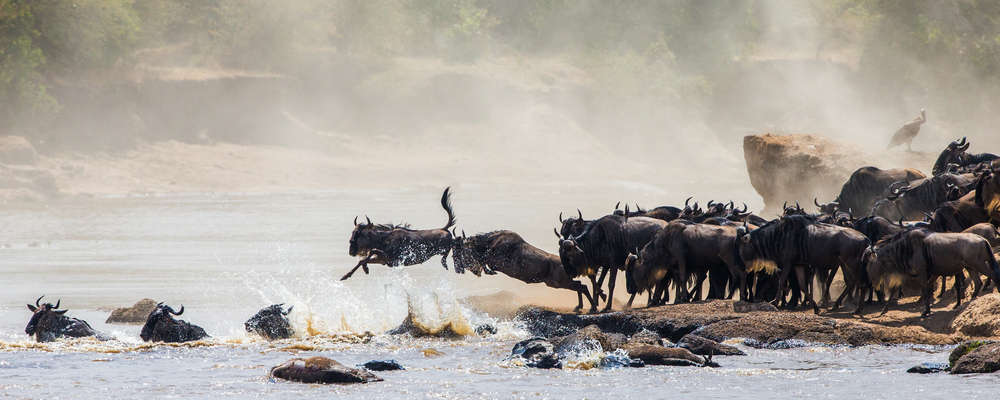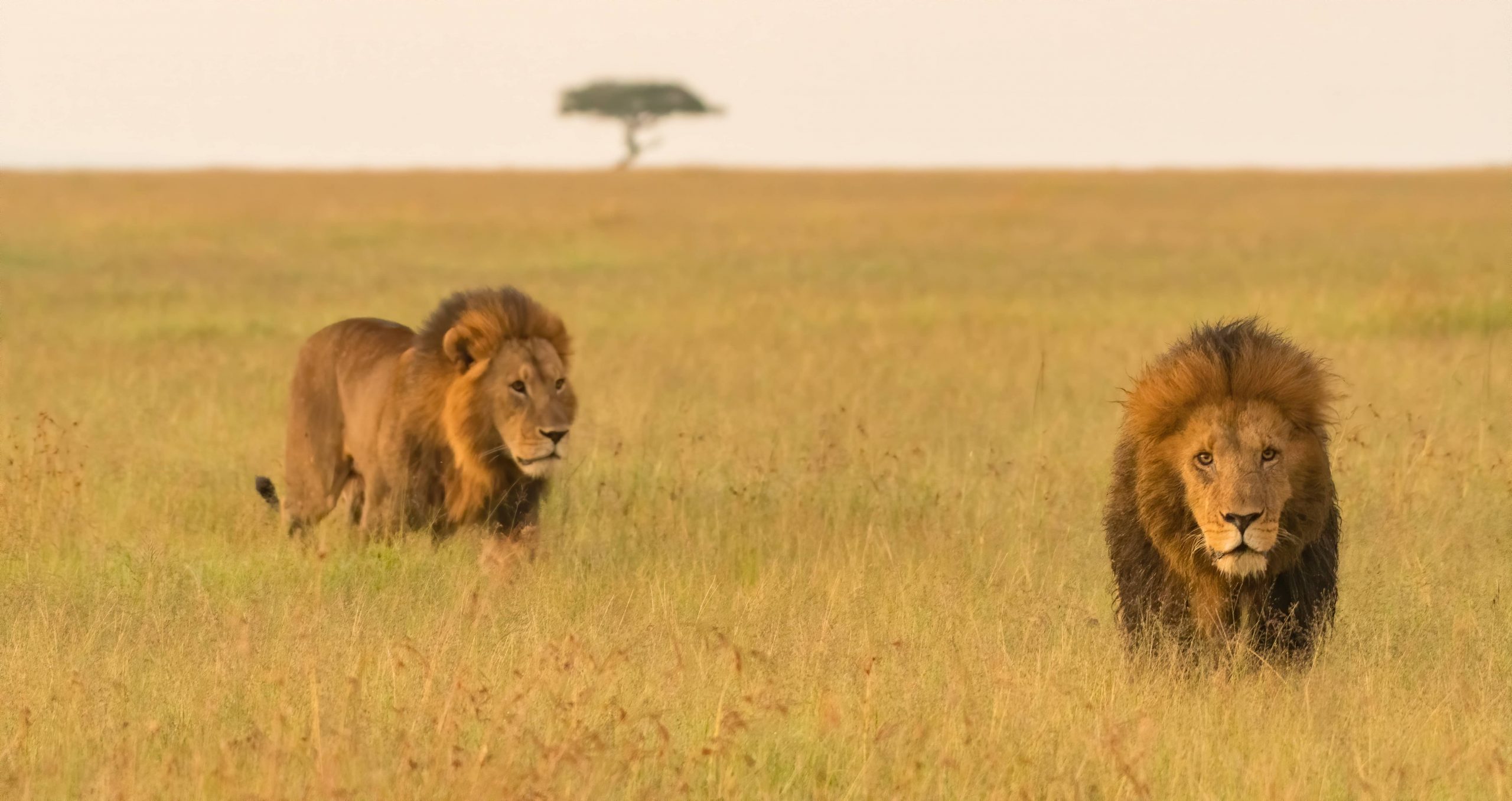Is it a good idea to go on a safari with kids?
This is one of the most common questions we hear from families eager to explore the magic of Africa with their children.
Our answer is a yes!
Going on a safari with kids is not only possible, it’s highly recommended—as long as you take into account a few important considerations we’ll cover in this post.
A safari with children is a once-in-a-lifetime adventure.
Watching wild animals in their natural habitat, learning about ecosystems, and sharing the thrill of the unknown is an unforgettable experience for the whole family. Parents and kids alike return home with stories they’ll treasure forever.
In our case, we’ll never forget the look on our two-year-old daughter’s face as she watched elephants, lionesses, giraffes, and other animals during our safari through Tanzania and Kenya.
Will she remember it? We’re not sure—experts say those early memories may fade. But what we do know is that the experience made her grow. Even if one day all she remembers are the photos, we believe that something inside her has been planted. A seed that, as she grows, will help her become more aware of nature and the different realities of countries like Tanzania and Kenya.
Questions to Ask Before Going on a Safari in Africa with Kids
The main doubts or considerations for a family planning a safari with kids might include:
- The fatigue of being in the car all day.
- Long travel distances.
- Possibility of contracting a disease.
- Food and water safety.
- Heat or temperature variation.
- Clothing needed.
- The cost of traveling with additional people.
- Which destination is better for a safari: Kenya or Tanzania?
Going on safari with Kids in Tanzania
In this analysis, we focus on the experience of traveling with children to Tanzania in a private group, meaning with a guide and vehicle exclusive to your family, without sharing with anyone else.

Safety on a safari with Kids
Tanzania and Kenya are safe countries for tourists, and even more so in the safari area, where there is hardly any population, overcrowding, and therefore, you will not find the situations of robberies or thefts that you can find in the big cities.
The main problem that can occur in the savannah areas is if you get sick. As in any trip with children, this is a fear shared by parents, although at the same time, we would never go anywhere if we only thought about it, and in general, the desire to know, share unforgettable experiences, and learn in places totally different from where we usually are, is more important than the “paralysis” because of the “what if it gets bad? If you are a traveler, and in addition, now you have children, you know what we are talking about.
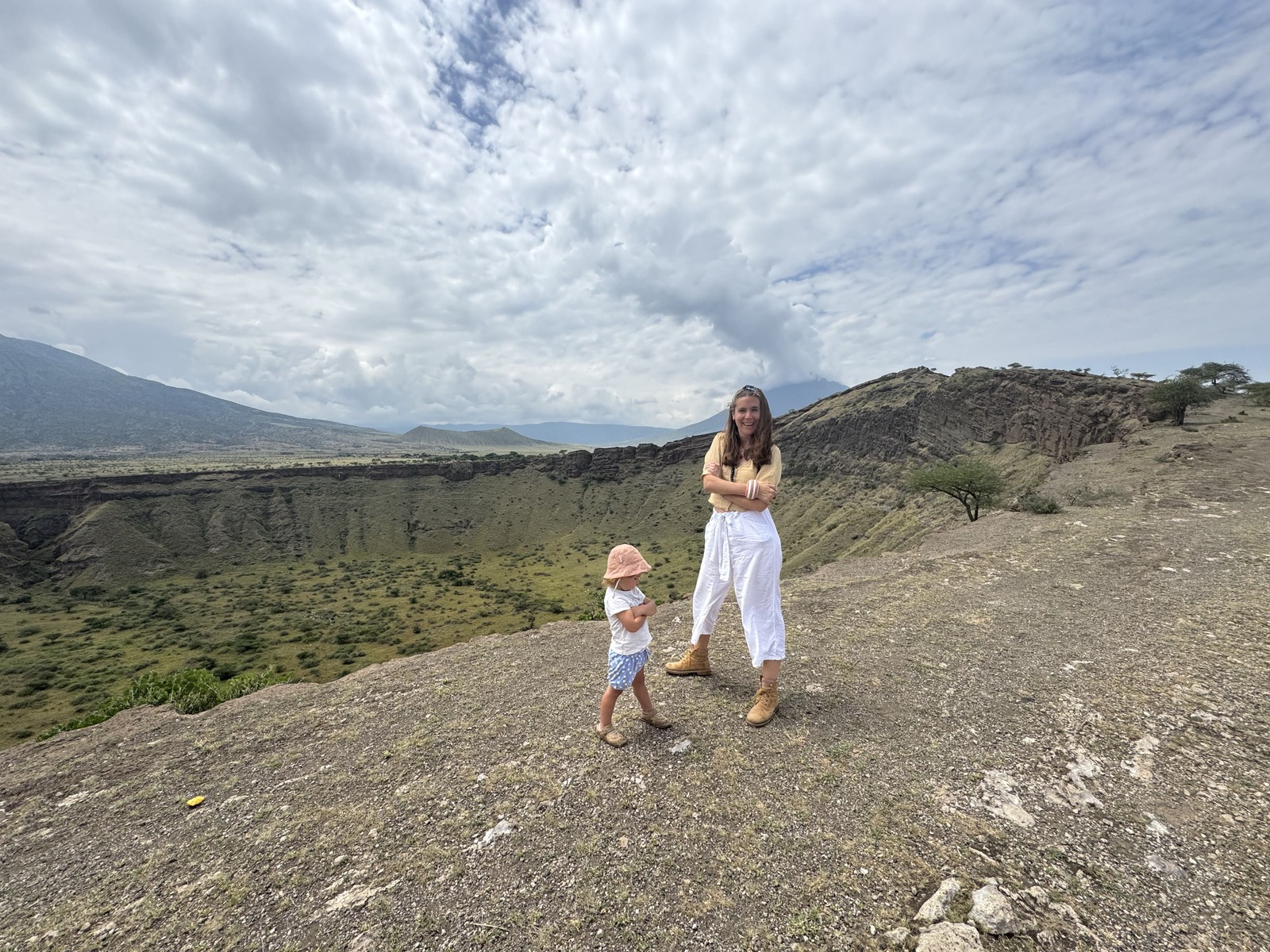

Access to medical centers
In this sense, there are families who attach great importance to having a medical center near the lodgings. In this case, very close to the accommodations in Tanzania that we offer, the NGO with which we collaborate has a medical center near Momella with all kinds of specialists and good facilities. It is a small medical center, of course. It is not a big hospital, which we would need in case something serious happens. In that case we would go to Arusha or Dar es Salaam, the capital. But if what happens is something routine, a virus, a cold, something stomach, or the typical fall of any child, this medical center is perfect for care, diagnosis and even medicines (although we always recommend that you bring your own medicines, to which you resort most, and your first aid kit). In fact, you may even be seen by Cornelia herself, the director of the NGO, who is a doctor and works at the medical center taking care of patients.
What is almost mandatory is to have a good travel health insurance, especially for the little ones, to be able to travel with peace of mind.
Vaccination
For the vaccination issue, you will have to go to an international vaccination center in your city. They, looking at your vaccination record, will tell you which vaccines you need to be vaccinated and what medication you will need to take to travel to Africa. They are experts and it is normally a public service, although the visit may have a cost. In Barcelona, the visit is 35 € and includes the vaccinations that they have to give you.
A very common issue to consider is malaria. It is generally recommended to take malaria prophylaxis during the trip to avoid contracting the disease from a mosquito, but it is also common to decide that children should not take it. You should take into account the time of the year in which you travel, and also the detail that in high and dry areas (the areas of the national parks of Tanzania and Kenya are areas high above sea level) there is very little risk, since mosquitoes are located in humid areas and more tropical climate, such as on the coast. If you travel in the dry season, you have even less risk, since without rain, there are fewer insects.
Transportation during the Safari in Tanzania
In Tanzania, the drives are longer and can be more tiring for your children than in the Kenyan area where we offer the experiences. You have to go from park to park and the drives can take from 2 to 5 hours depending on the day. For example, returning from Ngorongoro Crater to Arusha is about 5 hours and there is no way to return by plane.
Even so, there are many families that do it. The important thing is to know how your children are, and to control the schedules. For many families, it is no problem to get up early on their first day of safari (one of the longest journeys), and take advantage of that time for the children to sleep in the car. If they stay asleep for 2 hours, we have already won a lot. The same on the way back. We usually recommend to do the last day of safari in Ngorongoro, and return after lunch or in the early afternoon. We assure you that after days of safari, fatigue is noticeable. And it’s not just the kids who will fall asleep. You will also spend part of the journey as if nothing, letting your driver take you back to your accommodation.
The option of going by plane
However, if you want to visit the main parks in northern Tanzania with children, and avoid the return by car, there are alternatives. You can do the northern route (Tarangire, Manyara, Ngorongoro and Serengeti) and return from the Serengeti by plane to Arusha. This way we save a long drive, in addition to seeing the beautiful Serengeti National Park from the sky.
Returning by plane will increase the price of the safari, of course. Comfort always has a price.
What Type of Accommodation Should You Choose for a Safari with Kids?
One thing we quickly realized during our safari with our 2-year-old daughter is how much we appreciated having a “base camp” where we could stay for at least two nights. Arriving at a lodge, unpacking, having dinner, sleeping, and then repacking again the next morning to move on to a different hotel can be exhausting—especially with young children. If your kids are older and more independent, that’s a different story. But when they’re little, it’s a lot of work.
That’s why, for safaris with kids, we recommend making longer stops. For example, if you’re planning a 3-day safari that includes Tarangire National Park, Lake Manyara, and the Ngorongoro Crater, why not spend all three nights in one central location? You can use it as a base camp and take day trips to each park. Having one place to “live” for 2–3 nights is far more comfortable than changing hotels constantly. Trust us—your kids will thank you for it. They’ll quickly feel familiar with the lodge, and they’ll look forward to things like that pool they already know and love.
Another important factor is the type of accommodation you choose for a family safari. Not all lodges are the same in terms of price, comfort, or location.
For instance, during our stay in Tarangire National Park, we slept in a beautiful lodge inside the park with breathtaking views. But the very first thing we were told upon arrival was, “Don’t let your daughter walk around alone. Always keep her with you.” Why? Because the lodge was unfenced, and wild animals could—and do—wander close, especially at night.
It’s the same in the Serengeti: most lodges are located inside the park and are also unfenced, meaning you must keep a close eye on your child at all times.
On the other hand, there are accommodations outside the national parks that are fully fenced. These are 100% safe, and no wild animals can get in. That allows kids to move around the property more freely without constant supervision. If your child is 14 years old and 175 cm tall, that’s one thing—physically they’re the size of an adult. But if your child is 5, 6, or 7, it’s definitely something to consider when choosing where to stay.
We stayed in a variety of places, and today, when helping families plan their safari, we know exactly which accommodations to recommend—especially for those traveling with younger kids.
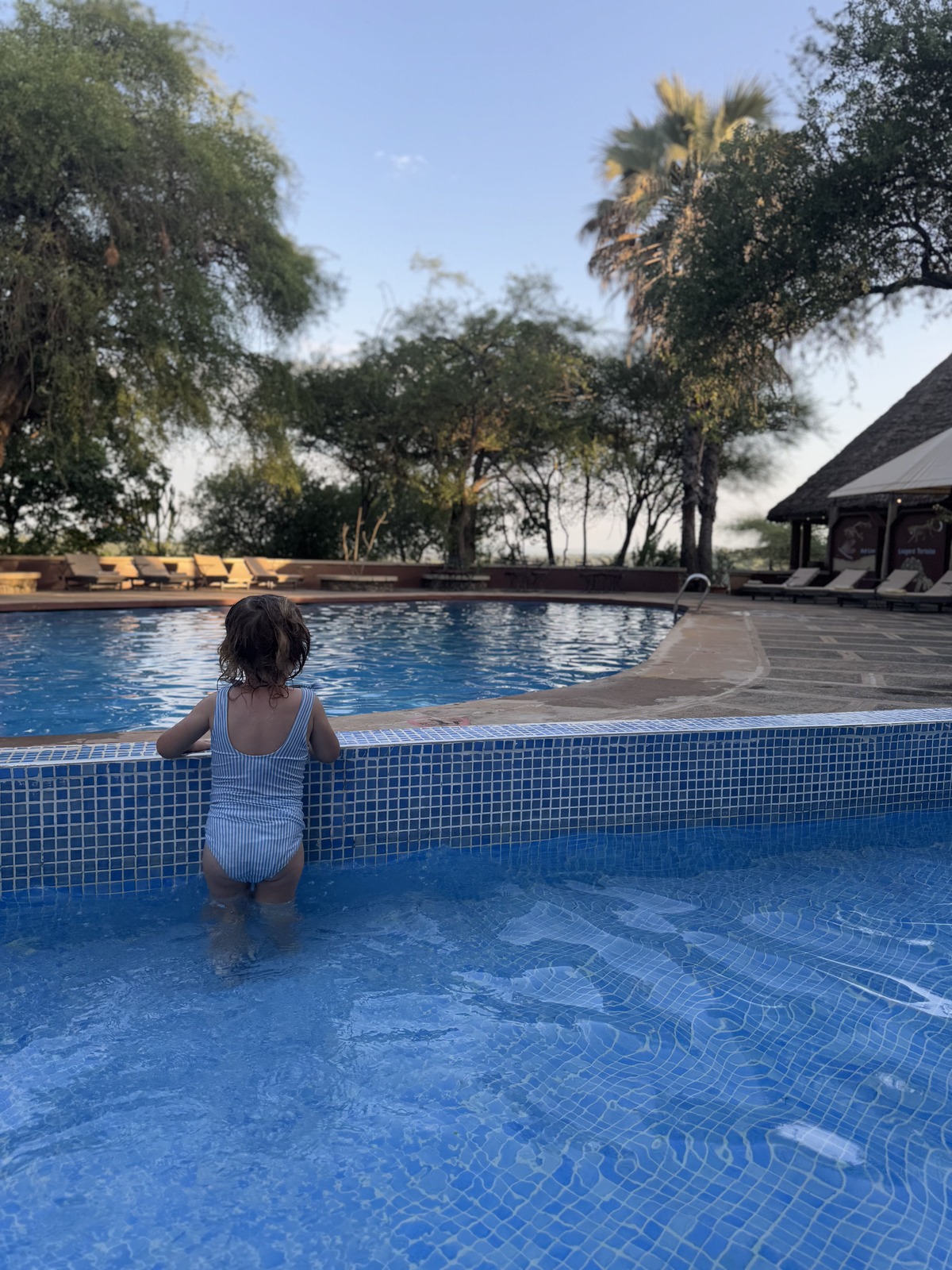
Meals During the Safari
The meals we offer during our safaris in Kenya and Tanzania are healthy, tasty, and quite similar to what you might eat in Spain. Of course, they have a unique twist, since local African ingredients are different from what we’re used to back home.
In both Kenya and Tanzania, the cooks always prepare fresh, homemade meals—nothing is processed or pre-packaged. The cuisine is simple but very nutritious, with vegetables playing a starring role. Another important point: in the spirit of sustainability, both countries prioritize using local ingredients, and all meals are cooked the same day.
You’ll also enjoy a varied diet, and if you’re vegan, vegetarian, or have food allergies or intolerances, there’s no need to worry. The staff are used to adapting menus and offering alternatives. For example, during our last trip, my mother—who has celiac disease—came with us, and every day they made fresh gluten-free bread just for her. She even said it was some of the best gluten-free bread she’d ever had!
On safari days, the lodges prepare picnic lunches for the whole family, so you can enjoy your meal in the middle of the national parks and continue exploring afterward. Don’t worry about cutlery, drinks, napkins—everything will be packed and ready for you.
As for water, it’s bottled throughout the trip, so there’s no need to buy your own—we provide it for you. Plus, both lodges are very conscious about reducing plastic use. They avoid single-use plastic altogether, so you’ll always have a reusable glass or stainless steel water bottle with you.
Prices of a safari with children in Tanzania
Great news: children pay less.
In Tanzania, safari prices are as follows*.
- Children under 5 years of age do not pay for park entrance fees or accommodations. Considering that the entrance fee to a park costs 70 US dollars per person, the savings of not paying the entrance fee and accommodation is high. So, if you have a 4 year old child, and you want to do a safari with your child, this is a positive detail to take into account.
- Children from 5 to 12 years old pay 50% of the entrance fee and 50% of the accommodation.
At that age children already remember, so knowing that the savings of doing a safari with your children is 50% is a good opportunity to do the safari with your children.
- Children from 13 to 16 years old pay 75% of the entrance fees and accommodations.
Without being a very big saving, it can be important, since safaris in general are expensive, so saving 25% of for example 2,000 euros, is 500 euros less that you will have to pay for your child to do the safari.
In the following link you have the available routes for Tanzania, including Safaris, Maasai immersive tourism and visit to the NGO projects in a beautiful rural area. If you also want to finish the trip with a few days of sun and beach we also have combinations between safaris and beach. Everything is customizable.
(*Note: if you want to do a safari with children in Tanzania, please contact us to confirm that this is still the case, and so that we can make a route according to the type of trip you have in mind).
Safari with Kids in Kenya
If, on the other hand, you prefer to go on safari without having to travel too far, being close to your accommodation, our recommendation is to travel to Kenya with Trip to Help. Why? Basically because the lodge is within the Masai Mara area, in a conservation area, and in half an hour drive you are already on safari seeing all kinds of animals in the wild. In addition, safaris are made for half a day, so you can return for lunch or dinner at your lodge, and spend the other part of the day to do other activities such as playing with the Maasai children who are in the school of the NGO, next to the lodge.
The only long drive, which can be avoided, is the one from Nairobi to the Masai Mara (Lemek Conservation Area). It is the one you do the first day and / or the last. It is about 5 hours and can be avoided by flying by light aircraft from Nairobi at an extra cost (about 40 minutes drive).


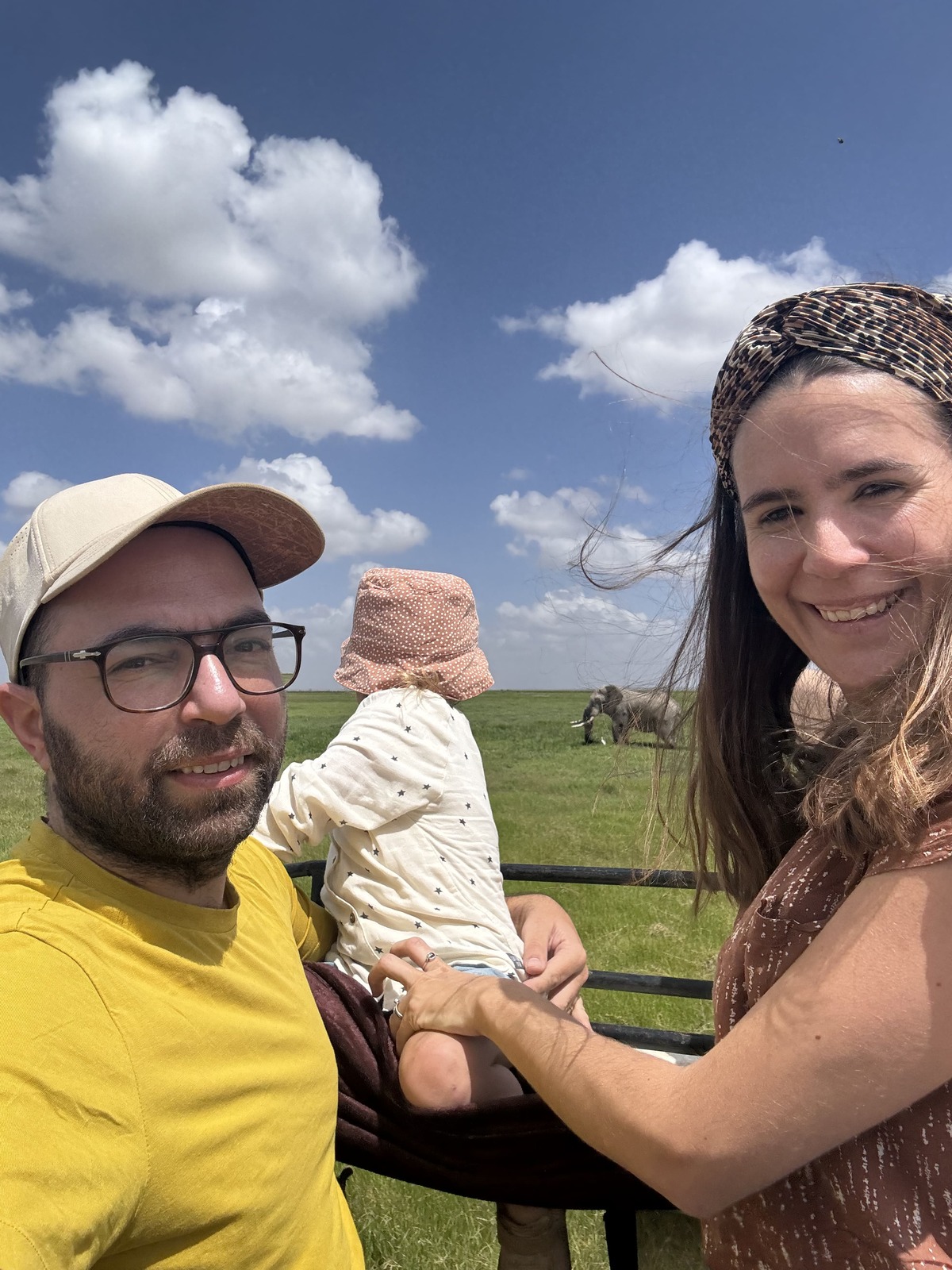
Kenya is one of the most tourism-friendly countries on the African continent, with several hospitals and one of the best medical centers in all of Africa. If that is your fear, do not worry. Of course, you should take out medical insurance to avoid surprises, and know that if something happens, you are fully covered. In this post we analyze the best travel insurance, and if you hire through our links you will get a discount.
Prices of a safari in Kenya with children
In the case of a safari with children in Kenya, the savings are less than in Tanzania.
For example, in Kenya, if the child is between 5 and 11 years old, they pay 40 euros instead of 70 euros per day for Conservation Zone fees. On the other hand, in accommodation they pay the same as if they were adults.
You can see the routes and safaris in Kenya in the following link:
What to wear during a Safari with Kids
At this point we won’t take too long, because if you want to know what to take on safari it is important that you read this post where we explain and detail everything you need. For your children you should follow the same recommendations, bearing in mind, as always, that they may need more changes of clothes.
What we do anticipate is that you should bring warm clothes, because at night and in the mornings it can be a little cold, especially if your trip is during the months of June, July or August, our summer, and its winter. Another fact if what worries you is the heat: we have in our imagination to think that it will be unbearably hot there, and we assure you that it is hotter in many parts of the Spanish geography than in the safari area of Kenya or Tanzania. It is hot, but dry, and if you wear breathable clothes, cotton or linen, it is ideal.
Conclusions of a safari with Kids
We are in favor of traveling with our children. Children, at that age, perceive and learn many things that later, when they are older, they will remember for the rest of their lives. Just look at how the children of traveling families like Los Mundo know nature in a way that almost no child who goes to school knows it. And not only that, their sensitivity and respect for it is very particular. This is thanks to being in close contact with natural life and seeing in first person the animals in their habitat, without fences, without limits and in coexistence with other species.
One detail: it is important that the children understand that they must keep quiet when the guide stops to see animals up close. The animals want to be quiet, otherwise they will either leave or get angry with us. So, make sure your son or daughter is able to keep quiet when the car stops to see the animals up close. If so, one more reason not to hesitate: take them on a safari in Africa.
Every family is different and you will have the last decision, but remember that Tanzania and Kenya are safe countries and super adapted to tourism, that you must have a medical insurance for your peace of mind and finally that every day more and more traveling families decide to travel with their children and go on safari. Don’t you want to be one of them?
We finish with this list of reasons on instagram why we believe that yes, traveling with kids, and on safari, is one of the best things you can do.



Other blog entries:
- Arusha National Park: complete safari guideLocated in northeastern Tanzania, between Kilimanjaro and Mount Meru, Arusha National Park is one of the least known parks in the country. Despite its relatively small size (137 km²), it offers an impressive variety of landscapes and wildlife, making it an ideal choice for a first safari with children, either by car or on foot.…
- Mandatory travel insurance for travel to ZanzibarIf you are traveling to Zanzibar or have plans to go there soon, this is of interest to you. The local government has announced that all tourists entering Zanzibar from October 1, 2024, will be required to take out compulsory insurance to travel to the island. This insurance is mandatory and is independent of any…
- Seeing the Great Migration in Kenya: An Unforgettable Natural SpectacleWatching the great migration in Kenya is one of the most impressive natural phenomena in the world. This annual event attracts thousands of tourists and nature lovers eager to witness the majesty of wildlife at its best. At Trip to Help, we are excited to offer you the opportunity to see the great migration in…
- TRIP TO HELP, WINNER OF THE AFRICA WTM RESPONSIBLE TOURISM AWARDSTrip to Help, the online agency for responsible and regenerative travel, born in Barcelona, receives in its second year of life the the most outstanding recognition, the GOLD award, from the prestigious World Responsible Tourism Awards, held within the framework of the annual international tourism fair World Travel Market, in Africa (Cape Town). The company…
- Our visit to Lake Natron in TanzaniaLake Natron (Lake Natron), in northern Tanzania, is one of the most mysterious places in Tanzania. Its reddish color, its volcanic landscapes and its flamingos, make it an ideal destination to get away from the classic 5-day safari in Tanzania. Located in one of the most remote areas of the country, this alkaline lake is…
- How much does a Kenya Safari Cost?Going on safari in Kenya is a unique trip in the world, and although nowadays there are cheaper alternatives, it is still expensive and not suitable for all budgets. How much does it cost to go on safari in Kenya? Why are some cheaper than others? Are all safaris the same? What budget do I…
- Original Maasai Lodge: An example of sustainable lodgingThe Original Maasai Lodge is a very special lodge, ideal if you are looking for an exclusive and different place, but that at the same time dedicates all its profits to social projects. Located in front of Kilimanjaro, and in the middle of the Maasai area, the Original Maasai Lodge is a group of“bomas” created…
- How to make a sustainable trip to Kenya: Tips & TricksADCAM’s accommodation in the Maasai Mara, a sustainable lodge for a sustainable trip in Kenya.
- Sustainable Safari in TanzaniaWhen we travel to Tanzania for a safari, we have a moral and ethical responsibility to try to make it as sustainable as possible. In a safari, as in most trips, we can decide what kind of impact we will have on the territory. And if we are going to do a safari in Tanzania,…
- Sustainable Travel in TanzaniaTanzania is a destination that receives many tourists every year, thanks to breathtaking natural landscapes, abundant wildlife, safaris in world-renowned national parks, and idyllic beaches. In 2019, Tanzania welcomed 1.5 million international tourists and aims to increase this number to 5 million by 2025. However, the growth of tourism can bring significant environmental challenges and…
- Money in Kenya: tips and tricksToday, I’m going to share some money tips and tricks for traveling to Kenya. How much cash should I bring? What currencies are accepted in Kenya? Are ATMs readily available? Can you use a credit card in Kenya? These are some of the common questions we receive when organizing your vacations in Kenya. By managing…
- Money in Tanzania: practical tips for traveling to TanzaniaIn this article I will answer many of the questions travelers ask us before traveling: Money in Tanzania . What money should I bring to Tanzania? Is it better to bring cash from Spain or take it out there? Do you accept Euros? Are there ATMs? Do you accept credit or debit card payments? There…
- What is the best time to travel to Kenya?Kenya is one of Africa’s top destinations. If you have come this far, you are planning to go on safari in Kenya or get to know the life of the Maasai tribes. We want the trip to be unforgettable and not ruined by bad weather. It is important to know what is the best time…
- Going on a Safari with Kids: Is It Recommended?Is it a good idea to go on a safari with kids? This is one of the most common questions we hear from families eager to explore the magic of Africa with their children. Our answer is a yes!Going on a safari with kids is not only possible, it’s highly recommended—as long as you take…
- Kenya or Tanzania Where is the best safari?When we want to go on safari, we always ask ourselves the best country to go on safari: Kenya, Tanzania, South Africa? There are several countries where we can do a safari. In this post in particular we are going to make a comparison between a safari in Kenya and a safari in Tanzania. We…
- Our Kenya Safari ExperienceWe really wanted to go on safari in Kenya, and besides, it was the first time we traveled having launched Trip to Help. In addition to enjoying ourselves, we had our sights set on analyzing what we were going to experience and then tell about it. And above all, we wanted to see what it…
- The best travel insurance for Tanzania: Chapka or IATI? – 2024If you want to go to Tanzania and you want to take out travel insurance to cover you for any unforeseen event, illness, loss of luggage, you will need a good travel insurance that will cover you for all those unforeseen events. In this post we analyze and compare two of the most famous insurance…
- 10 days in Zanzibar: For independent and first time travelersZanzibar is the ideal destination after a few days of safari, Maasai culture and nature walks in Tanzania. In this post we explain you how we lived our trip, and we make you a list of must-see in Zanzibar in 10 days. The island of Zanzibar is very different from mainland Tanzania, and has all…
- 5-day safari in TanzaniaOn our honeymoon trip to Tanzania we knew we wanted to go on safari. We studied all the options and in the end we decided to go on a Safari of 5 days in Tanzania. Differences between a 5-day and a 3-day safari? During the 5 days on a safari, you have enough time to…
- Getting around in ZanzibarIn this post we explain you how to get around in Zanzibar (on your own). We have been there, and we assure you that it is comfortable, it is not difficult, it is safe, and it also allows you to discover corners away from the typical tourist stops, where you will discover the local side…



